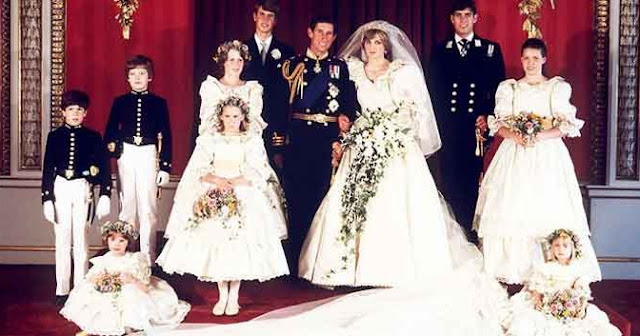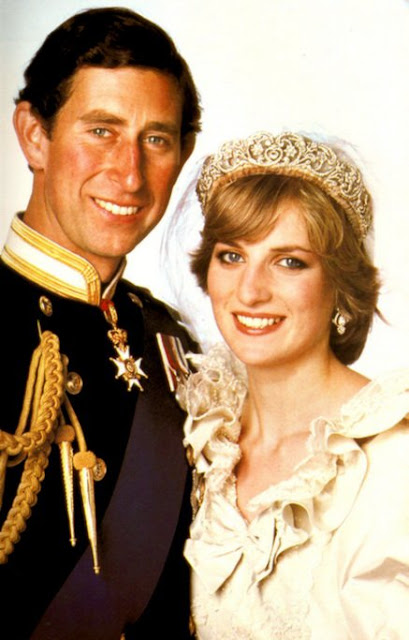Diana Frances Spencer, born July 1, 1961 in Sandringham (Norfolk County) and died on August 31, 1997 in Paris, is a British aristocrat, wife of Charles, Prince of Wales, from July 29, 1981 to August 28, divorced.Diana was one of the most famous women in the world at the end of the 20th century. His emotional distress during the 1980s and 1990s inspired many biographies, photos, newspaper articles and television films. She was also a world emblem of charity, creating a number of associations to defend such causes as the fight against AIDS or the eradication of antipersonnel mines.From her marriage until her divorce, her titles were: Her Royal Highness the Princess of Wales and Countess of Chester, Duchess of Cornwall, Duchess of Rothesay, Countess of Carrick, Baroness of Renfrew, Lady of the Islands, Princess of Scotland ; but her official title was Her Royal Highness the Princess of Wales. After her divorce in 1996, the Queen granted him the title of "Princess of Wales" courtesy without a predicate. It is, however, better known in France under the name of Lady Diana and even more under the diminutive Lady Di; the press also called her Princess Diana, although this was incorrect, since this title is reserved for princesses of blood.
Descendant of Georgiana Spencer, Duchess of Devonshire; great-grand-niece of Georges Spencer; Diana Frances Spencer is the younger daughter of Edward Spencer (1924 - 1992), Viscount Althorp and her first wife, Frances Burke-Roche (1936-2004). The Viscountess came from a family that had emigrated to America. Her grandmother, Frances Work, born in New York, was a descendant of Charles II of England (in illegitimate descent) and, through him, Henry IV, King of France, Saint Louis and Hugh Capet.In addition, Diana and her friend Sarah Ferguson also had distant relationships, as Sarah was also a descendant of Georgiana Spencer, by her illegitimate daughter, Eliza Courtney. Later, Diana favored Sarah's marriage to Prince Andrew of the United Kingdom, his brother-in-law. This union will also result in a divorce, but, unlike the princes of Wales, the couple will remain on good terms. Diana's parents were also divorced; this hectic separation caused by the vicomtesse's adulterous relationship with the heir of a wallpaper fortune, Peter Shand Kydd, had made the girl the stake of a lawsuit that her mother sued her ex-husband to obtain the custody of Diana and her brother.Third daughter of Viscount Althorp, then thirty-seven years of age, and Viscountess, twelve years her younger, Diana soon experiences a feeling of guilt because she is not a boy, the long-awaited male heir of the couple, especially since in 1960, Lady Spencer had given birth to a boy so fragile that he lived only a few hours2.At the death of his paternal grandfather, Albert Spencer, in 1975, Diana's father became the 8th Earl Spencer, and she became Lady Diana Spencer. The following year, his father, Count Spencer, married Raine McCorquodale, recently divorced from the Earl of Dartmouth, the eldest daughter of novelist Barbara Cartland.Diana studied at Riddlesworth Hall in Norfolk and then at the West Heath Girls' School in Kent. At 16, she studied for a short time at the Alpin Videmanette Institute, an institution for young girls of good family in Rougemont, Switzerland. Pianist, she was also a great athlete, and wanted to be a dancer
Buckingham Palace stated that Diana being the mother of the second and third heirs of the British throne, remained a member of the British royal family.

In 2004, NBC television broadcasted videos where Diana commented on her marriage to the Prince of Wales and gave her version of her attempted suicide. The videos belonged to the princess, but at her death, her butler took possession. After numerous legal proceedings, they were handed over to his singing teacher who had authored it. These videos are not yet available in the UK.
When Prince Charles negotiated his divorce, it was decided that Diana would be withdrawn from her title of Princess of Wales but that she could keep it as a courtesy. She was also able to keep her apartments 8 and 9 at Kensington Palace, which she had occupied since the beginning of her marriage and where she remained until her death. She also continued to use two offices at St. James's Palace
In 1995, Diana started a passionate idyll with Dr. Hasnat Khan, a cardiothoracic surgeon at the Royal Brompton Hospital where she met him on September 1, 1995 when he had just operated one of his old friends . She discovered the joys of anonymity to hide their relationship, wearing wigs, scarves and glasses. In May 1996 and 1997, she went to Pakistan for charity but mostly to meet the doctor's traditionalist family, the "love of her life", that she was thinking of marrying but the Khan refused to have their son marry to a non-Muslim woman. Worse, what Hasnat Khan was afraid of, their romance began to leak in the media, ending their relationship in June 1976.
Diana, who wanted to regain control and take revenge on the royal family, began a relationship with Dodi Al-Fayed, the son of the Egyptian billionaire Mohamed Al-Fayed, who was also taking his revenge since the British citizenship was refused.
But this romance was only a facade, a lure destined to make jealous Hasnat Khan orchestrating for this purpose the publication of the famous photos of her and Dodi in the Gulf of Saint-Tropez. On her own initiative, she performed her various bathing suits, diving from the private jetty of the Al-Fayed family villa, jet skiing with her children, or on their luxury yacht Jonikal.
On August 10, 1997, one of the Sunday Mirror titled The Kiss, showing Dodi and Diana hugging. Although it is highly questionable whether it was a stolen photo, the tabloid later admitted that the photo had been retouched. But Diana, who had become an expert in media manipulation by lending herself to the game of the paparazzi, felt progressively caught in her own trap, conscious perhaps of going too far in the media exposure of her love affairs which she gave to her ex-family, this exhibition touched her children in turn) or tired of this media harassment.
In the late 1980s, the Princess of Wales became known for her support for humanitarian causes such as helping AIDS victims or combating the use of antipersonnel mines. She especially helped the poor children of Africa and was at the side of many personalities like Nelson Mandela, Mother Teresa and the Dalai Lama.
In April 1987, the Princess of Wales was one of the first celebrities to be photographed touching a person with the HIV virus. His contribution to changing public opinion about HIV-positive people was summarized in the words of Bill Clinton in December 2001 in Diana, Princess of Wales. Read on AIDS:
"In 1987, when a large part of the population believed it was possible to contract AIDS through simple contacts, Princess Diana sat on the bed of an AIDS patient and shook her hand. She showed the world that HIV-positive people do not deserve isolation but compassion. These positions have helped to change global opinion, give hope to people living with HIV and save lives. "
Her investment in humanitarianism may be the most high profile of her trip to Angola, when in January 1997 as a VIP volunteer with the Red Cross and Red Crescent, she visited anti-personnel mine survivors, demining projects organized by the British HALO Trust and supported education and awareness programs on the dangers of mines in the immediate environment of houses and villages.
In August of the same year, she went to Bosnia with the Landmine Survivors Network. She paid close attention to the injuries that anti-personnel mines caused well after the end of a conflict, and often to children.
Its influence on the signing of the Treaty for the Prohibition of Antipersonnel Mines, Treaty of Ottawa on December 3, 1997 (shortly after its death) by 122 countries predominated14. In presenting the Landmines Bill to the British House of Commons in 1998, Foreign Minister Robin Cook saluted Diana's contribution in these terms:
"All members of this assembly will be grateful to the Princess of Wales for revealing the human cost of anti-personnel mines. The best way to take into account its action as well as that of the NGOs that have fought against the mines is to vote the bill and thus open the way to the global ban on mines. "




























No comments:
Post a Comment